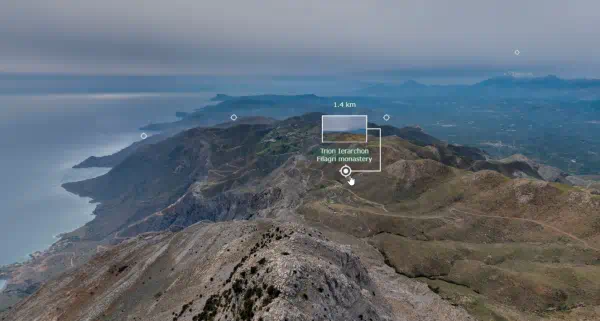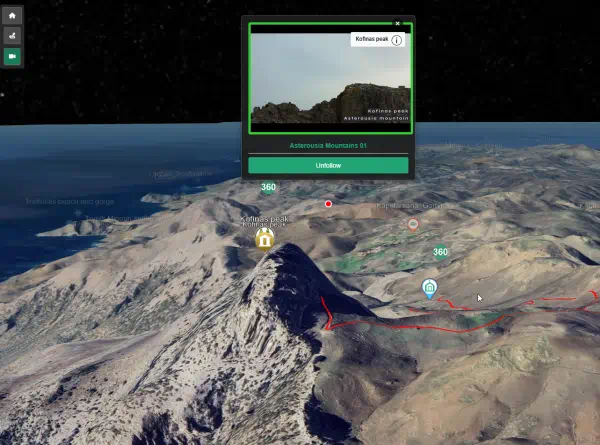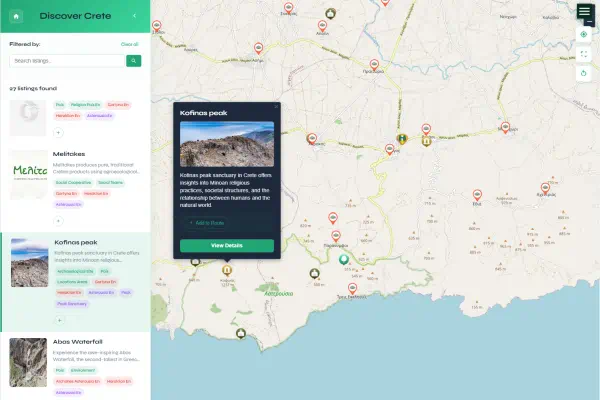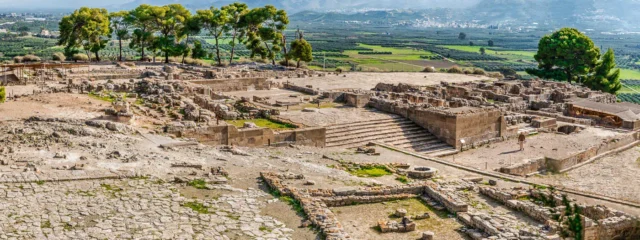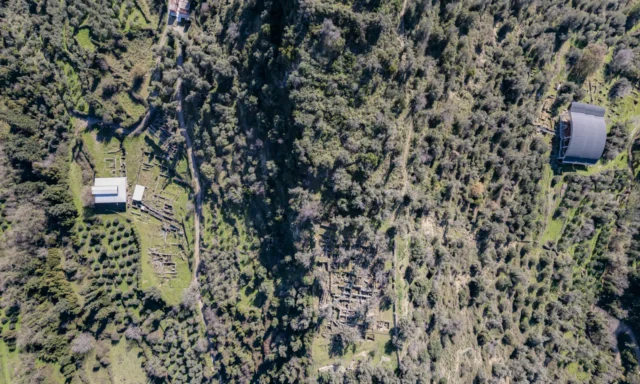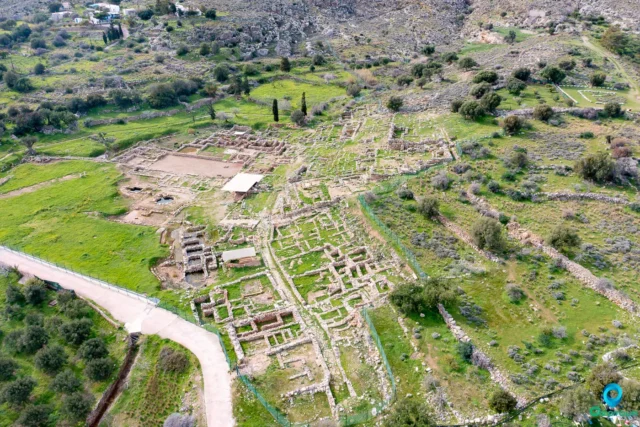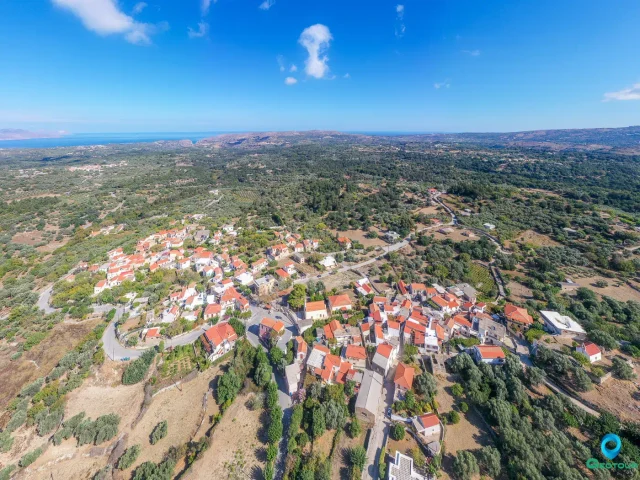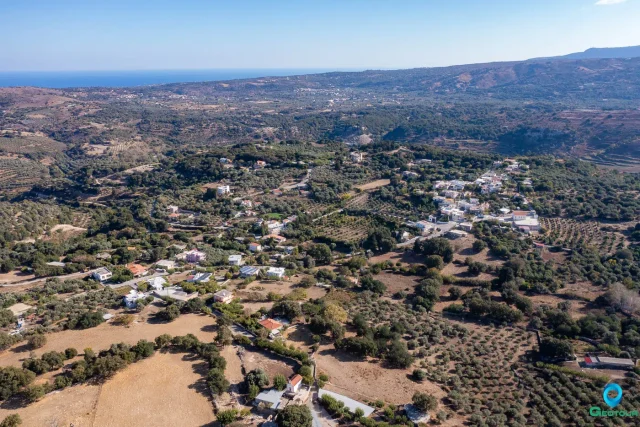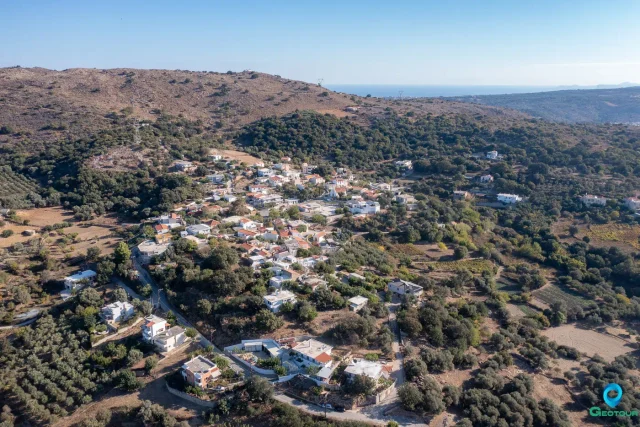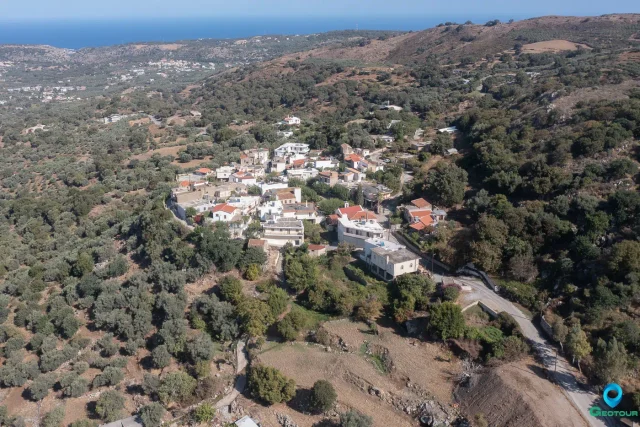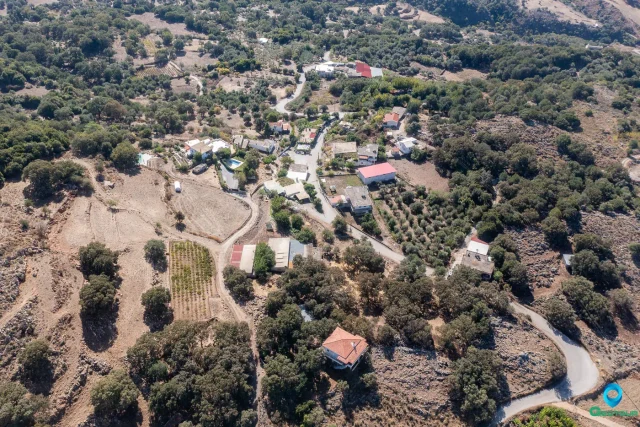Zouridi is a village in the Regional Unit of Rethymno, Crete, and the administrative seat of the homonymous community within the Municipality of Rethymno. It is located 19.5 kilometers southwest of the city of Rethymno, at an altitude of 260 meters. The area offers a panoramic view and is traversed by the Neratzea river. The settlement has been officially designated as traditional.
Etymology and History
Archaeological evidence indicates the presence of an organized settlement in the area since ancient times, though its original name is unknown. The village is first mentioned in 1577 by Francesco Barozzi as Suridhi. In the Venetian census of 1583 by Kastrofylakas, it is listed as Zuridi with 103 inhabitants. The core of the settlement was likely a tower belonging to a Venetian feudal lord, around which laborers settled to cultivate his estates.
There are two main theories regarding the origin of the name “Zouridi.” One suggests it derives from the word “zouries,” which describes the ambushes frequently set by Christians against Venetians and Turks along a nearby road leading to the mountainous villages of Asi Gonia and Myriokefala. A second tradition attributes the name to a Turkish Janissary named Zouridis, who was killed at a feast due to his bad behavior.
The village experienced significant growth during the Ottoman period, particularly after families from the destroyed nearby villages of Artos and Christochori relocated there. On June 17, 1821, Greek forces successfully repelled an Ottoman attack in the area. Zouridi was home to the chieftain Stavrianos Biris, who participated in the revolutions of 1878 and 1895. Many residents of the village participated in national struggles, including the Balkan Wars, the Asia Minor Campaign, and the resistance against German occupation during World War II.
In 1872, a Greek school with three classes was established in the village. It was the only higher school in the region at the time and educated many future teachers, doctors, and other professionals. In 1925, Zouridi was administratively attached to the community of Agios Konstantinos, but in 1928 it became the seat of its own community until the Kapodistrian administrative reform, when it was incorporated into the Municipality of Nikiforos Fokas. Today, it is part of the Municipality of Rethymno.
Archaeological Findings and Attractions
At the location ‘Xenagiorgi,’ an isolated Late Minoan III period tomb has been identified. Additionally, remains of Minoan and Roman settlements have been found at the ‘Agios Georgios’ site.
The parish church is dedicated to Agios Panteleimonas (Saint Pantaleon). Its iconostasis dates to 1886 and its icons to 1892. Other churches in the village include Agios Ioannis o Prodromos (Saint John the Baptist), Analipsi Kyriou (Ascension of the Lord), Agios Ioannis o Theologos (Saint John the Theologian), Agios Antonios (Saint Anthony), Agios Nikolaos (Saint Nicholas), and Zoodochos Pigi (Life-giving Spring).
In the nearby abandoned settlement of Christochori, the churches of Agia Paraskevi (Saint Paraskevi) and Metamorfosis tou Sotiros (Transfiguration of the Savior) are preserved. The church of the Transfiguration contains frescoes from the early 14th century, created by a Cretan artist in a linear style. The church of Agia Paraskevi, which served as the cemetery church, dates to the 15th-16th century.
The area is rich in natural springs, and several fountains have been preserved. One notable example is the Fountain of Mustafa Bey, located near the cemetery. It features an inscription in the old Ottoman script dated to 1838-1839.
Notable People
Zouridi is the birthplace of several notable individuals, including:
- Pavlos Drandakis (1894-1945): Publisher of the Great Greek Encyclopedia.
- Vasileios Drandakis: Notary and plenipotentiary during 1897-99, who designed the flag of the Cretan State.
- Stavros Biris (1921-1999): Member of Parliament for Rethymno (1952-1956) and later for Piraeus (1963-1967), who served as Minister of Mercantile Marine.
- Stavrianos Biris (d. 1905): A chieftain who participated in numerous battles and is buried in Zouridi.
- Georgios Leledakis (d. 1936): Author and professor of philology.
- Emmanouil Drandakis: An engineer involved in the construction of the Megalopotamos bridge in 1854.
- Dimitrios Agrimakis: The well-known groundskeeper for the Panathinaikos football club’s training center in Paiania.
- Lefteris Veryvakis: A government minister.
- Manolis Fradellos: A Lieutenant General.
Settlement: Key Points
- Location: 19.5 km southwest of Rethymno, at an altitude of 260 meters.
- Historical References: First mentioned as Suridhi in 1577. Appears in the Venetian census of 1583. Grew during the Ottoman era.
- Historical Significance: An important educational center for the region with the establishment of a higher school in 1872. Birthplace of numerous prominent figures in politics, publishing, and military service. Designated as a traditional settlement.
- Current Status: A local community within the Municipality of Rethymno.
- Population Data:
Year | Population | Notes |
1583 | 103 | Listed as Zuridi |
1881 | 171 | 170 Christians, 1 Muslim |
1900 | 270 | Counted with Agios Georgios |
1920 | 230 | |
1928 | 209 | |
1940 | 213 | |
1951 | 199 | |
1961 | 136 | |
1971 | 108 | |
1981 | 89 | |
1991 | 101 | |
2001 | 120 | |
2011 | 66 | |
2021 | 55 |

